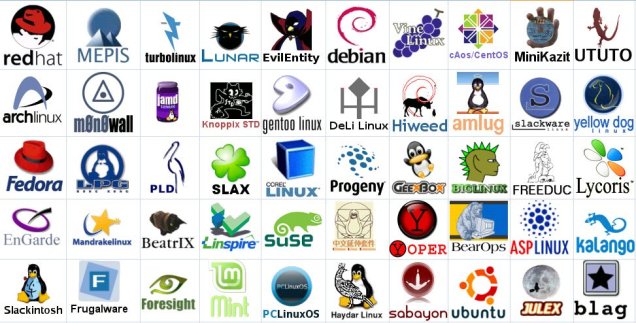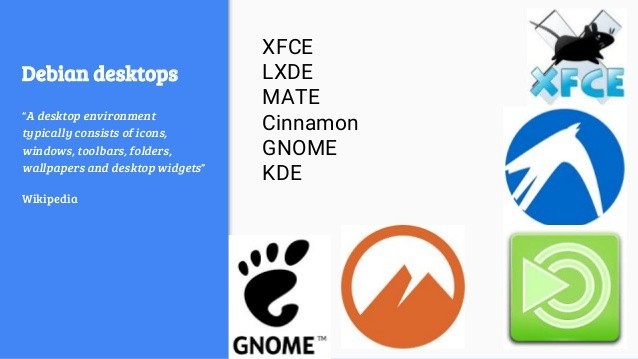Linux is being increasingly adopted in home computers. The operating system recorded a 3.61% share of the world’s computers in June, according to data from NetMarketShare. It may seem a small portion, but it corresponds to a historical record for operating systems of this type and reflects a high trajectory since the previous one was 3.17% and had been reported in May.
Users considering switching operating systems and adopting the distribution may end up with recurring doubts, about what terms such as Gnome or KDE are, or even how safe Linux is, which game support is available, and what level of apps the system offers. With that in mind, Techidence has prepared a list with all the details about the operating system.
How does the Linux operating system work?
Linux is a term used to classify a kernel used in many operating systems, and what sets it apart is that it is offered completely free and developed by a concentrated effort of thousands of developers worldwide.
The kernel is the core of the operating system and is tasked with bridging the applications you run with the hardware. Because it’s completely free, Linux ends up encouraging companies and user groups to apply the component to make varied operating systems, with specific focuses and always free. These different operating systems are called distributions.
What are Linux distributions?

Linux is fragmented into distributions. Ubuntu, as well as the various distributions that use it as a base, goes through a different path. The installation is standardized and, if on the one hand, it is possible to install several components that are not so important for your day-to-day, on the other, there is the security of an installation process easier to understand and a system that does not require more in-depth knowledge at the time of updating and maintenance in a user experience that is close to Windows.
Other examples of high-quality distributions are Fedora, Manjaro (a more chewed-up incarnation of Arch), Linux Mint (based on Ubuntu), elementary OS (based on Ubuntu and with strong appeal in the solid use experience), Debian, OpenSUSE, Antergos, Pop_OS!, Zorin OS and many others.
What are desktops like Gnome, KDE, and Cinnamon?

Linux is fragmented into different graphical interfaces. So it is possible to have Ubuntu with Gnome, or with KDE (with the name Kubuntu). There is Manjaro with a Cinnamon graphical interface, the same as Linux Mint, as well as Manjaro with Gnome or Xfce.
These interfaces correspond only to the visual aspect of the operating system and how it behaves. While KDE values customization very highly, Gnome aims for a more common user experience among its users. An interface like Xfce, on the other hand, is economical in hardware and can weigh a little on the operating system, which makes it common in distributions of this kind.
Is there a variety of compatible programs?
The question of offering programs and alternatives to software available in Windows was a major constraint for many people interested in migrating. However, Linux today has a better position with regard to the software catalog: when the tool or app used in Windows does not have a version for Linux, there is a good chance of finding equivalents as good as Linux.
In any case, perhaps the best-known example of software for Windows without a Linux version are the Adobe tools, important for professionals in several areas. In this case, there are equivalent applications found in Linux and, in some cases, you can risk running Adobe programs through virtualization or with tools such as Wine, which expands the compatibility of Linux with Windows and allows running native applications from the Microsoft system.
How does it work for games?
When it comes to games, Linux still doesn’t compete with Windows 10 in terms of catalog, but there is still a growing interest from developers and consumers, with more and more native versions of famous games for the platform. Hitman, Metro 2033, and Shadow of the Tomb Raider are just a few examples of this trend.
Another factor that may help convince some gamers are initiatives like Steam’s Proton. This technology allows Linux to run games created for Windows without many complications for the user. The list of compatible games is long, and although there are some games with some compatibility limitations, most of them work normally, allowing you to play hits like The Witcher series, PUBG, and GTA 5.
Is Linux safe?

Linux-based operating systems tend to be safer because they are used by a smaller user base, and also end up as a lower priority on the criminals’ radar. This does not mean that the system is hack-proof, but only that the chance of ending up infected by malware or the target of a criminal is lower.
Even so, the operating system has antivirus options and any security holes and breaches tend to be fixed quickly, in system updates that reach users quickly, in the same pattern as Microsoft and Apple do when it is necessary to fix some vulnerability in their platforms.
How to install and dual-boot?
It is possible to download a free copy of any distribution without a valid license, as with Windows or macOS. To install, you need to save the chosen operating system image to a USB stick, boot the computer via USB, and start the installation process. If you want to split the computer between Windows and Linux, you will need to partition the hard disk to create space for the new system to preserve Windows 10 intact, thus ensuring that the two systems work independently.
Are there hardware requirements and specifications?
Thousands of developers around the world are attracted to a concerted effort to make the system more user-friendly, efficient, and compatible with new platforms. The result is that Linux works on virtually any hardware: by installing it on a tablet or mobile phone, you can find options to give new life to an old and slow PC and also choose something ideal to work on something like Raspberry Pi.
What are the benefits?
The potentials of the operating system are quite varied and each type of user may find a specific advantage. If you just want to try something different and get out of Windows, you’ll find a very varied operating system on Linux, with simple options to get started and understand. There is great ease in customization and the offer of apps and games should not leave anyone at hand.
More inquisitive users will find a platform that allows them to learn more about computers by allowing the user to have full control of what the operating system does and how it behaves. Linux also has significant benefits for those who have a computer with simpler hardware, and who want to give the device survival. With a multitude of options, it is possible to find light systems, which save resources and even leave computers with simple processors and little RAM with better performance.
The system also stands out for its high reliability and is the main choice in space programs around the world when it comes to preparing manned or unmanned missions; it is used in most of the fastest supercomputers in the world and emerges as the base operating system on which much of the Internet works today.
This post may contain affiliate links, which means that I may receive a commission if you make a purchase using these links. As an Amazon Associate, I earn from qualifying purchases.

